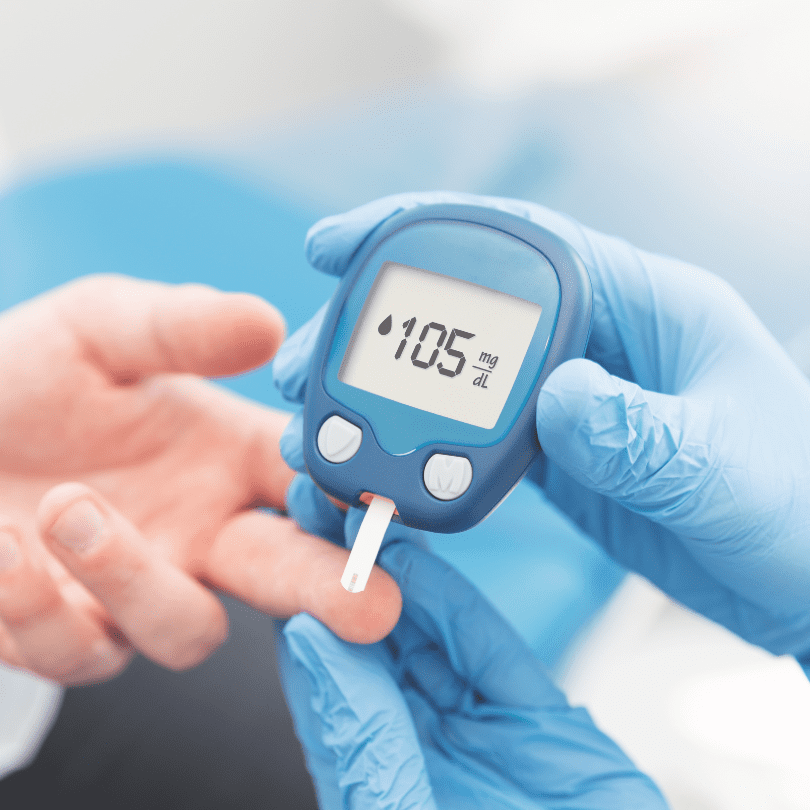
There are many parts of the body that are most affected by diabetes
What is diabetes?
Diabetes mellitus is a group of metabolic diseases characterized by high blood glucose level, resulting from impairment in insulin production, insulin action, or both [1]. Insulin, a hormone secreted by the pancreas, allows your body to use glucose from the food, we eat to produce energy.
Diabetes’ prevalence is increasing globally (2). Almost under half a billion people suffer from diabetes worldwide, and the number is estimated to increase by 25% in 2030, and 51% in 2045 [3].
Signs of Diabetes
The classic symptoms of diabetes are:
• Increased urinary frequency (polyuria)
• Increased thirst (polydipsia)
• Increased hunger (polyphagia)
Severe weight loss is common in type I diabetes. Fatigue, restlessness, and body pain are common undetectable signs of diabetes [4]. When left untreated, it can lead to potential complications that include blindness, heart damage, kidney damage, stroke, and lower limb amputation.
Types of diabetes
There are mainly three types of diabetes:
• Type I diabetes or insulin-dependent diabetes is an autoimmune disease [5]. The immune system attacks insulin-producing beta cells of the pancreas, resulting in low or no insulin production. As it is genetic, it usually appears in childhood or adolescence [6] but it can occur at any age [7].
• Type II diabetes or insulin-independent diabetes occurs when there is not enough production of insulin or insulin resistance. It is also related to other health conditions e.g. high blood pressure or high cholesterol levels [8].
• Gestational diabetes defines as glucose intolerance that occurs or identified for the first time during pregnancy [9]. It usually reveals during 24-28 weeks of pregnancy [10]. It can be controlled with proper diet and exercise, or it can go away once the baby is delivered.
Diabetes affecting body systems
The mechanism through which diabetes causes damage to other systems is complex but it is mainly due to the toxic effects of prolonged high glucose levels.
Kidney damage (Diabetic Nephropathy)
Diabetes is a leading cause of kidney damage [11] and affects its ability to filter toxic substances from the blood. If the amount of protein in urine elevates, it could be a sign that your kidneys are not functioning properly.
Eye disease (Diabetic retinopathy)
Most people having diabetes develop some form of eye disease causing reduced or total loss of visual function. Diabetes remains an important cause of blindness in developed countries [12].
Continuously high levels of blood glucose along with high blood pressure and high cholesterol can leads to retinopathy [13].
Circulatory system
Diabetes increases the risk of developing high blood pressure and is linked with high cholesterol levels, which contributes to increase risk of heart attack and cardiovascular diseases [14].
The nervous system (Diabetic Neuropathy)
Diabetes can cause damage to nerves throughout your body. This can lead to problems with digestion, erectile dysfunction, sweating abnormalities, and cardiovascular diseases [15]. The most common affected areas are the extremities, particularly feet.
In older adults with type II diabetes, there is an accelerated loss of leg muscles or quality [16].
Diabetes affects the overall health of an individual. It should be managed to avoid any complications, by maintaining glucose and cholesterol levels and regular check-ups [17, 18]
References:
1. Mellitus, D.J.D.c., Diagnosis and classification of diabetes mellitus. 2005. 28(S37): p. S5-S10.
2. Federation, I.D., IDF diabetes atlas ninth edition 2019. 2019.
3. Saeedi, P., et al., Global and regional diabetes prevalence estimates for 2019 and projections for 2030 and 2045: Results from the International Diabetes Federation Diabetes Atlas. 2019. 157: p. 107843.
4. Ramachandran, A.J.T.I.j.o.m.r., Know the signs and symptoms of diabetes. 2014. 140(5): p. 579.
5. DiMeglio, L.A., C. Evans-Molina, and R.A.J.T.L. Oram, Type 1 diabetes. 2018. 391(10138): p. 2449-2462.
6. LaPorte, R., M. Matsushima, and Y. Chang, Prevalence and incidence of insulin dependent diabetes: In Diabetes in America. 1995, Bethesda, MD, National Diabetes Data Group, National Institutes of Health ….
7. Mølbak, A., et al., Incidence of insulin‐dependent diabetes mellitus in age groups over 30 years in Denmark. 1994. 11(7): p. 650-655.
8. Pediatrics, A.D.A.J., Type 2 diabetes in children and adolescents. 2000. 105(3): p. 671-680.
9. Reyes‐López, R., et al., Metabolic, hormonal characteristics and genetic variants of TCF7L2 associated with development of gestational diabetes mellitus in Mexican women. 2014. 30(8): p. 701-706.
10. Hawryluk, J., et al., Gestational diabetes in the light of current literature. 2015. 38(228): p. 344-347.
11. USRDS, U.J.B., MD: National Institutes of Health, National Institute of Diabetes, Digestive, and K. Diseases, Annual data report: atlas of end-stage renal disease in the United States. 2003.
12. Rahmani, B., et al., The cause-specific prevalence of visual impairment in an urban population: the Baltimore Eye Survey. 1996. 103(11): p. 1721-1726.
13. Fong, D.S., et al., Retinopathy in diabetes. 2004. 27(suppl 1): p. s84-s87.
14. Resnick, H.E. and B.V.J.A.r.o.m. Howard, Diabetes, and cardiovascular disease. 2002. 53(1): p. 245-267.
15. Dyck, P.J., et al., Diabetic neuropathy. 1987.
16. Park, S.W., et al., Accelerated loss of skeletal muscle strength in older adults with type 2 diabetes: the health, aging, and body composition study. 2007. 30(6): p. 1507-1512.
17. Sanders, R.J. and M.R.J.J.o.t.N.M.A. Wilson, Diabetes-related eye disorders. 1993. 85(2): p. 104.
18. Gross, J.L., et al., Diabetic nephropathy: diagnosis, prevention, and treatment. 2005. 28(1): p. 164-176.
